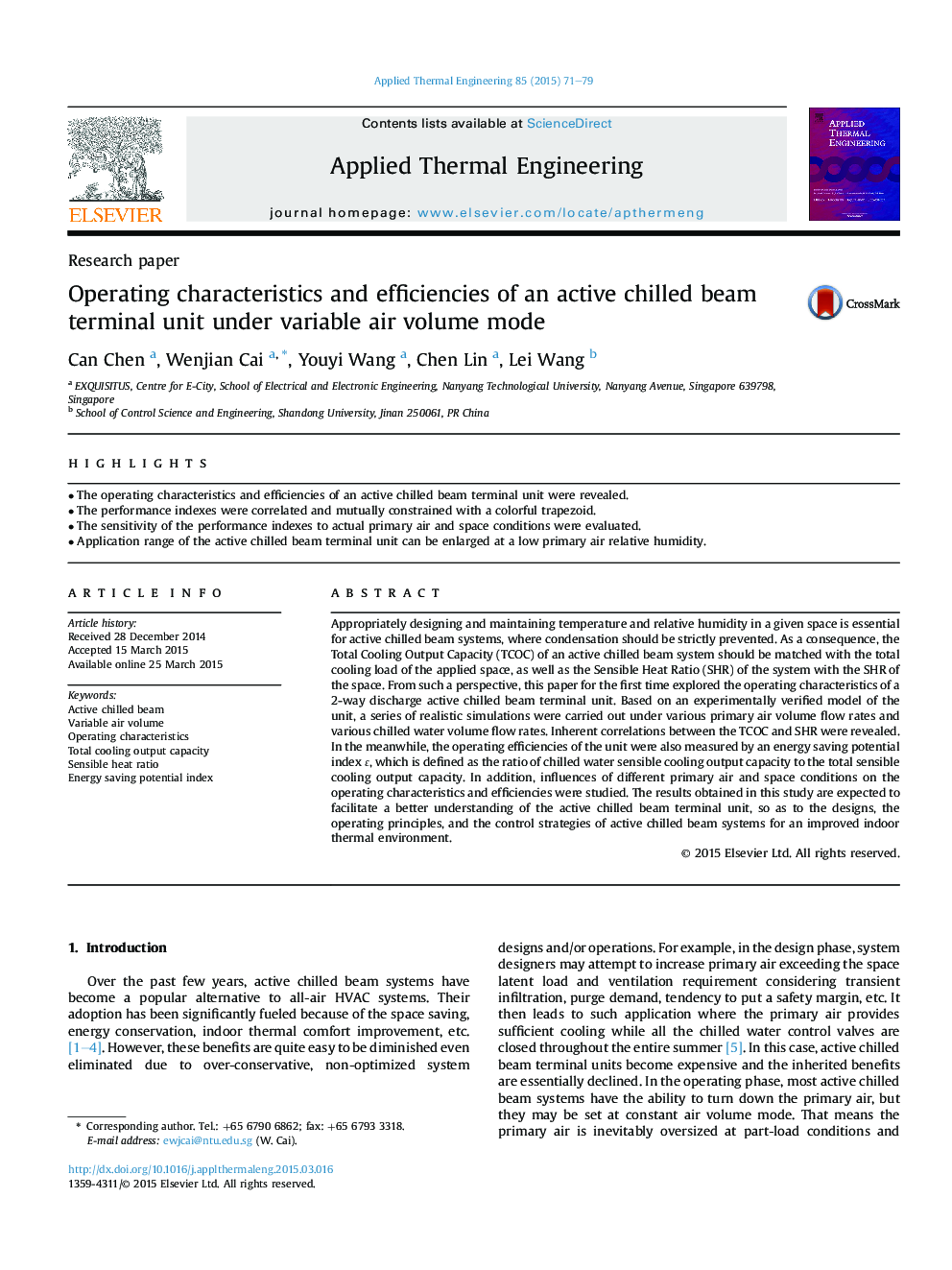| Article ID | Journal | Published Year | Pages | File Type |
|---|---|---|---|---|
| 645482 | Applied Thermal Engineering | 2015 | 9 Pages |
•The operating characteristics and efficiencies of an active chilled beam terminal unit were revealed.•The performance indexes were correlated and mutually constrained with a colorful trapezoid.•The sensitivity of the performance indexes to actual primary air and space conditions were evaluated.•Application range of the active chilled beam terminal unit can be enlarged at a low primary air relative humidity.
Appropriately designing and maintaining temperature and relative humidity in a given space is essential for active chilled beam systems, where condensation should be strictly prevented. As a consequence, the Total Cooling Output Capacity (TCOC) of an active chilled beam system should be matched with the total cooling load of the applied space, as well as the Sensible Heat Ratio (SHR) of the system with the SHR of the space. From such a perspective, this paper for the first time explored the operating characteristics of a 2-way discharge active chilled beam terminal unit. Based on an experimentally verified model of the unit, a series of realistic simulations were carried out under various primary air volume flow rates and various chilled water volume flow rates. Inherent correlations between the TCOC and SHR were revealed. In the meanwhile, the operating efficiencies of the unit were also measured by an energy saving potential index ɛ, which is defined as the ratio of chilled water sensible cooling output capacity to the total sensible cooling output capacity. In addition, influences of different primary air and space conditions on the operating characteristics and efficiencies were studied. The results obtained in this study are expected to facilitate a better understanding of the active chilled beam terminal unit, so as to the designs, the operating principles, and the control strategies of active chilled beam systems for an improved indoor thermal environment.
